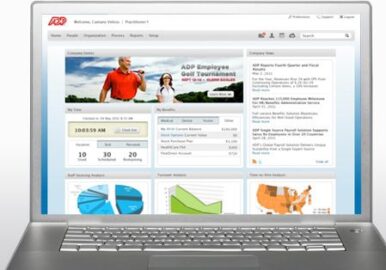How to Calculate and Use Year-Over-Year YOY Growth Bench Accounting

Let’s pretend for a moment that you are a Wall Street research analyst tracking performance of Alphabet stock, better known as Google. With an ever increasing list of financial products on the market, we don’t cater to every single one but we do have expansive coverage of financial products. Investormint endeavors to be transparent in how we monetize our website. Financial services providers and institutions may pay us a referral fee when customers are approved for products. If Bitcoin’s price surges to a value above Tesla’s average purchase price in the future, the impairment charges reported on 7 February 2022 will become redundant.
- Now, divide the difference by last Quarter 1’s revenue to get the growth rate.
- No level of diversification or asset allocation can ensure profits or guarantee against losses.
- Calculating YoY metrics is sometimes called “annualizing,” and it’s one of the best ways to develop a longer-term understanding of your business’s performance.
Now, let’s say you had 100,000 website visitors in January, which was a big decrease from the 200,000 you had in December. Before panicking, you consider the fact that your peak season is December, which could contribute to the sudden drop. Instead, you decide to find your YOY growth to compare your website traffic in January with January of last year. By measuring multiple business performance areas, you can see what’s working and what’s not. If something is not working, you may need to cut expenses or make other changes to improve. Do you know how your business is performing this year compared to last?
How to Calculate and Use Year-Over-Year (YOY) Growth
For someone who’s just starting a business and doesn’t have data from a previous year, there are alternative metrics to consider, such as month over month (MoM), month to date (MTD), or quarter to date (QTD). Both MTD and PMTD are useful in picking up and explaining quick trends in sales (sales pipeline metrics for example), marketing, financial, and any other business variables. They are most useful in businesses where keeping a handle on small daily and monthly changes is important. This information would help executives understand how revenue is growing from year to year, and not just for the current season. For it to be useful, year-over-year reporting should always compare performance with a similar time period.
On the other hand, YOY calculations can start from a specific date. The movie’s popularity also had a positive impact on sales of Mario games like “Mario Kart 8 Deluxe,” which sold an additional 1.67 million units during the quarter, bringing the total sales to 55.46 million units. The game has also boosted the sales of the seven-year-old Switch console, which sold 3.91 million units between April and June, up by 13.9% on the year. Software unit sales increased 26.1% year-on-year to 52.21 million units. The Benzinga Cannabis Capital Conference, the place where deals get done, is returning to Chicago this Sept for its 17th edition.
YoY (Year-Over-Year)
Then, by right-clicking one of the amount columns, choose Show Values As and % Difference From. Economic indicators help experts track market changes and even economies of countries. Some of the most important ones are the GDP (gross domestic product), employment indicators, and CPI (consumer price index). When dealing with them, it’s best to analyze the data using the YOY approach.
Since MTD is such a short period, some organizations also use previous month-to-date, or PMTD. This covers the time since the time between the beginning of the previous month and the current date. If you have any questions about your reports, you can message your bookkeeper or set up a call for a more in-depth discussion. When you outsource your bookkeeping to the experts at Bench, you’ve got more time to focus on what really matters—growing your business. Year over Year (YoY) tells you the percentage increase or decrease from one year to the next.

Let’s go into detail about what each one means, how they are used in business, as well as examples of these reporting acronyms in action. In addition to removing variables that are outside of your business’ control, YoY calculations are a great way of keeping tabs on long-term business performance. Finally, let’s say we wanted to compare daily figures, specifically daily net income for July the 4th, which is a day that your business (a restaurant) typically experiences an enormous once-a-year boost in sales. According to our calculations, your company grew its monthly revenue by 25% year-over-year. However, in most cases, Year-Over-Year is used to measure financial performance for a particular year, quarter, or month. Year over year growth measures how well your business is doing this year compared to how well you were performing at the same time in the previous year.
Market Risk (Definition: What It Is And All You Need To Know)
By comparing the same months in different years, it is possible to draw accurate comparisons despite the seasonal nature of consumer behavior. Investors like to examine YOY performance to see how performance changes across time. Many companies see an uptick in sales in November and December for the holiday season. If a company reported a 35% increase in revenue in December, the data would provide less insight than a report showing that revenue increased 20% in the most recent December to December period.
2023 Boom in Doll Collectible Market, 42% YOY Growth and 8.2% CAGR during 2023 to 2033 – Says Market Decipher – Yahoo Finance
2023 Boom in Doll Collectible Market, 42% YOY Growth and 8.2% CAGR during 2023 to 2033 – Says Market Decipher.
Posted: Wed, 02 Aug 2023 08:30:00 GMT [source]
YoY analysis is widely used in finance and economic analysis and is helpful for quickly understanding growth trends from year to year. A properly suggested portfolio recommendation is dependent upon current and accurate financial and risk profiles. “Year over year,” or YoY, refers to the process of comparing data from one year to data from the previous year. It’s a term you’ll hear frequently when considering investment returns because it allows you to look at changes in annual performance from one year to the next. However, the quality of the revenue being generated could have improved despite the slightly lower growth rate (e.g. long-term contractual revenue, less churn, fewer customer acquisition costs).
Examining several time periods year-over-year can help you narrow down when you may have made the error. Because these calculations are easy to interpret, they allow for simple comparisons. KPIs are business components that illustrate how well (or poorly) a business is operating.
What Are Golden Shares (Explained: All You Need To Know)
Until your company makes progress, you can rely on MOM or QOQ (quarter-over-quarter) techniques. Moreover, Nintendo’s latest blockbuster, “The Super Mario Bros. Movie,” released April 5, has generated global box office revenue of $1.349 billion nfl adp and has been viewed by 168.1 million people as of July 30. If you are already a registered user of The Hindu and logged in, you may continue to engage with our articles. If you do not have an account please register and login to post comments.

The holiday season is critical for retailers, with many businesses basing an entire year’s success on their fourth quarter. Retail giant Macy’s relies on holiday purchases to increase its sales numbers each year. By looking at Macy’s Q3 vs Q4 earnings in 2020, it seems as if the company performed well since there was an increase in reported revenue. However, by comparing 2020’s Q4 over 2019’s Q4, the earnings-per-share declined by 62% due to the Coronavirus pandemic.
Retail companies, for instance, often see substantial developments in the final few months of the year because of holiday shopping. To determine whether this time of year is successful, it makes sense to compare it to the previous holiday season – not the year’s first quarter. This YoY analysis removes the monthly or quarterly volatility in your analysis. For instance, in retail businesses, fourth-quarter sales (October to December in the calendar year) are almost always stronger than first-quarter sales (from January to March).
To best understand business success, we suggest starting by creating a website with a website builder that has built in analytics tools, like Wix. Then, utilize these tools to analyze your site’s performance and track changes over time. YoY can also be used to measure traffic to a webpage by looking at the rate for metrics like what device users are browsing on, traffic sources, or average time on page. Year over year is often used to calculate profits and losses, but can also be used to compare almost any metric a business wants to analyze. The same YoY formula can be applied to calculate metrics like employment rates or rate of user growth. Similarly to seasonality, business performance can vary over the course of a year.
During evaluation, investors will typically look at the YOY change in financial metrics. Some of them, such as liquidity and operating cash flow, are best followed through the YOY method, so the investors can determine how stable the business is. This information is valuable because it showcases trends in financial metrics. Also, it helps investors evaluate seasonal or cyclical businesses more objectively. The YOY approach lets businesses analyze their long-term performance without seasonal variations affecting it. The monthly and quarterly fluctuations can be drastic, but when you take the last year’s data into account, you get the whole picture.
YOY indicates the change from the comparable amount reported in the same period one year earlier. Just like YoY, month-over-month (MoM) is a metric that reflects growth. It is the smallest measurement of growth for a business that shows the increase or decrease in this month’s value of a certain variable as a percentage of the previous month. As you can see, YoY reporting gives a more global, stable view of company performance despite factors such as seasonality. It allows executives to be even more strategic and to make good decisions even in changing business environments. Year-over-year analysis is most commonly used when discussing financial or economic data, especially regarding growth.
